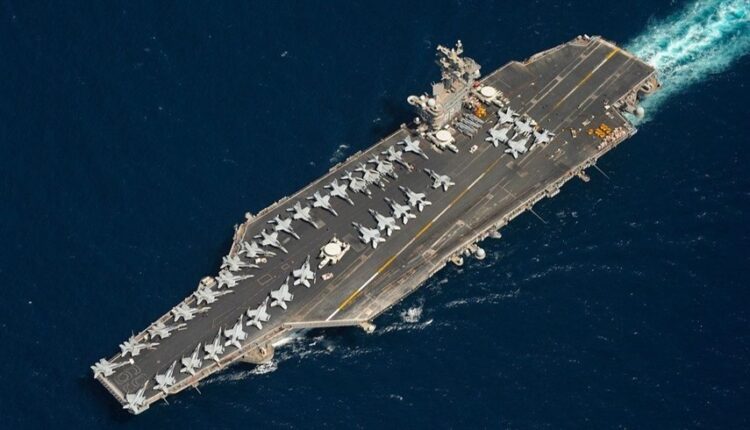US Naval Institute: Yemen has exposed our inability to wage modern wars
A report issued by the US Naval Institute confirmed that the war in the Red Sea with the Yemeni armed forces posed a huge challenge to the US naval forces and exposed the fleet’s weaknesses.
Follow-ups – Al-Khabar Al-Yemeni:
This battle, which according to Brad Cooper, commander of the US Navy in the Central Command region, is the “largest U.S. naval conflict since the Second World War,” is the first time in decades that US Navy vessels have taken sustained direct enemy fire, according to the institute.
The report notes that Yemen used weapons for the first time in military history, including an unmanned underwater submarine, and that the US Navy resorted to using the Close-In Weapon System (CIWS) or 5-inch gun after threats approached within lethal range.
This expended significant resources and took an enormous toll on personnel and equipment, according to the report.
Regarding the limitations demonstrated by the Red Sea region, it was difficult for carrier-based aircraft to gain important intelligence in a region without friendly troops on the ground. Advanced infrared targeting technology was used in an attempt to locate underground weapons; this decades-old technology lacks the resolution necessary. Crews therefore relied heavily on external intelligence assets, including MQ-9 drones, but integration with them requires another step in the kill chain to coordinate through the command-and-control network. Each added step delays time on target, but in the absence of a capable onboard targeting system, fighters needed to rely on assets external to the carrier.
A final limitation revealed in 2024 is the difficulty in detecting, tracking, and destroying small, one-way attack UAVs. “Cheap, mobile, and widespread, the UAVs the Houthis use are easy to hide, quick to launch, and difficult to locate, but capable of causing significant and precise damage.”
The institute advised prioritizing developing an inexpensive—and therefore sustainable—counter-UAV technology. Until then, “should be given to positioning assets out of the effective range of known hostile UAVs.”
Strategically, the institute said that among the most pressing concerns is one of supply: The Navy in 2024 rapidly exhausted crucial weapons, especially missiles, and the service faces a supply bottleneck as it seeks to replenish stocks. Destroyers have used large numbers of Tomahawk missiles, far outpacing US production. In one day, naval forces launched more Tomahawk missiles than the nation produced in the entire previous year. Critically, the use of such supplies reveals an inability of US defense manufacturers to scale up production. If US political direction requires the use of such weapons, the country must be able to produce them in sufficient numbers.
In addition, the institute points to another dilemma: the US Navy’s inability to deploy aircraft carriers for long periods of time, noting that the condition of equipment and crew morale both waver with time under constant stress.
The report confirms that the Red Sea battle revealed fundamental shortcomings in the US Navy, which are unique and may force it to make sweeping changes in tactics and principles, as well as hamper its ability to wage an advanced battle in the Pacific in the near term.

